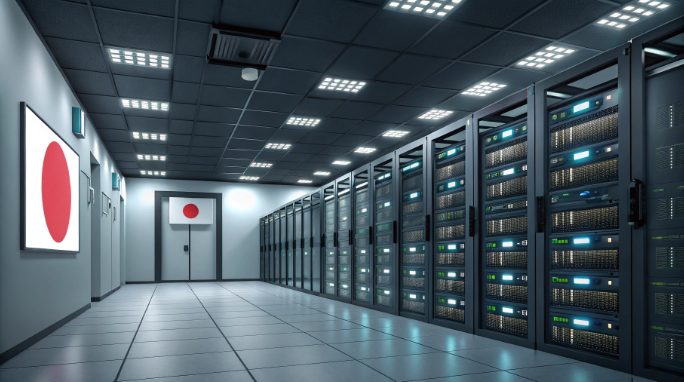Data Security: Japan Server Hosting for Enterprise Storage

In the rapidly evolving landscape of enterprise data storage, Japanese server hosting has emerged as a benchmark for security and reliability. This comprehensive guide delves into the technical infrastructure, security protocols, and compliance frameworks that make Japanese data centers a preferred choice for enterprise storage solutions.
Infrastructure Security Foundation
Japanese data centers exemplify engineering excellence through their robust infrastructure design. The foundation of security begins at the physical layer, incorporating multiple redundancy systems and advanced access control mechanisms.
- Seismic-resistant architecture with base isolation systems
- Redundant power supply systems with N+1 configuration
- Advanced HVAC systems maintaining optimal operating conditions
- Multi-layer physical access control using biometric authentication
Network Security Architecture
The network security implementation in Japanese hosting facilities follows a defense-in-depth approach, utilizing multiple security layers to protect against various threat vectors.
- Multi-layered firewall architecture with stateful packet inspection
- Advanced DDoS mitigation systems with machine learning capabilities
- Secure VLANs with microsegmentation
- Real-time traffic analysis and anomaly detection
Regulatory Compliance and Data Protection Standards
Japanese hosting providers adhere to stringent regulatory frameworks, particularly the Act on Protection of Personal Information (APPI). Understanding these technical compliance requirements is crucial for system architects and DevOps teams.
- APPI Compliance Requirements:
- Mandatory security controls for personal data handling
- Data breach notification protocols
- Cross-border data transfer restrictions
- Data encryption standards
Technical Security Measures
Modern Japanese data centers implement cutting-edge security protocols that exceed international standards. The technical architecture incorporates multiple layers of protection:
- Encryption Protocols:
- AES-256 encryption for data at rest
- TLS 1.3 for data in transit
- Hardware Security Modules (HSM) for key management
- Access Control:
- Zero Trust Architecture implementation
- Role-Based Access Control (RBAC)
- Multi-Factor Authentication (MFA)
Disaster Recovery and Business Continuity
Japanese hosting facilities excel in disaster preparedness, incorporating sophisticated recovery systems and redundancy measures:
- Automated failover systems with sub-second response times
- Geographic data replication across multiple regions
- Real-time synchronization with 99.999% uptime SLA
- Comprehensive disaster recovery testing protocols
Performance Optimization and Security Trade-offs
When implementing security measures in Japanese hosting environments, system architects must carefully balance performance requirements with security controls:
- Load Balancing and Security:
- Layer 7 load balancers with WAF integration
- SSL/TLS offloading optimization
- Cache security implementations
- Network Optimization:
- BGP routing with anti-spoofing measures
- Traffic shaping with QoS policies
- CDN integration with security headers
Monitoring and Incident Response
Japanese hosting providers implement sophisticated monitoring systems that provide real-time visibility into security events:
- Security Information and Event Management (SIEM) integration
- Machine learning-based anomaly detection
- Automated response playbooks
- 24/7 Security Operations Center (SOC) monitoring
Cost-Benefit Analysis for Security Implementations
Technical decision-makers should consider the following metrics when evaluating Japanese hosting security investments:
- Security ROI Metrics:
- Mean Time To Detect (MTTD) improvements
- Mean Time To Respond (MTTR) reductions
- Compliance automation savings
- Incident prevention statistics
Future Security Trends in Japanese Hosting
The evolution of security in Japanese hosting environments continues to advance with emerging technologies:
- Quantum-resistant encryption implementations
- AI-driven security orchestration
- Zero-knowledge proof systems
- Blockchain-based audit trails
Technical Implementation Recommendations
For optimal security configuration in Japanese hosting environments, consider these technical recommendations:
- Security Architecture:
- Implement microsegmentation using NSX or similar SDN solutions
- Deploy WAF rules specific to Japanese character sets
- Configure geofencing with IP reputation filtering
- Compliance Automation:
- Implement IaC with security policies as code
- Automate compliance reporting using APIs
- Set up continuous compliance monitoring
Conclusion
Japanese server hosting continues to set global standards in data security and infrastructure reliability. The combination of advanced technical measures, strict regulatory compliance, and robust physical security makes Japanese data centers an optimal choice for enterprise data storage solutions. As security threats evolve, Japanese hosting providers maintain their commitment to security excellence through continuous innovation and rigorous standards.

